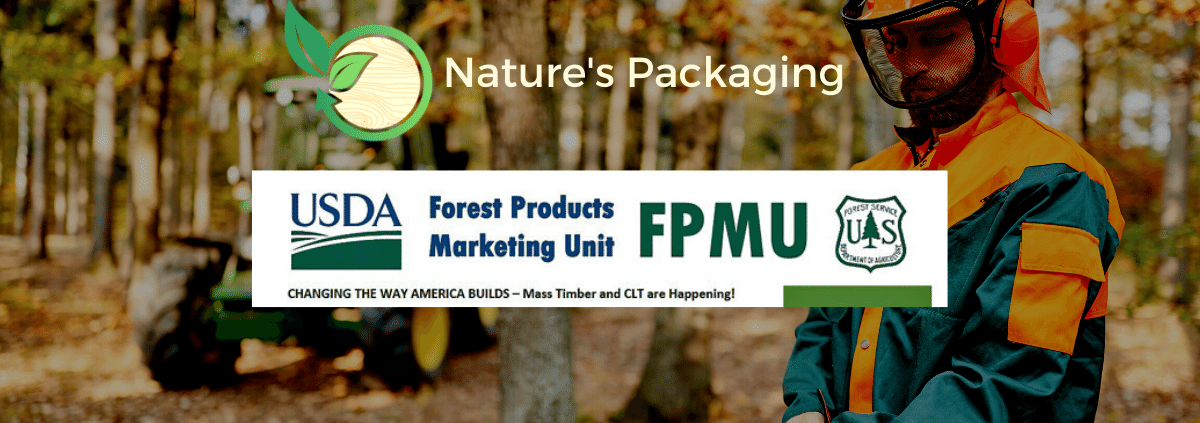Marketing Forest Products
For over 100 years, the Forest Products Laboratory has been at the forefront of optimized forestry. Their research, which started with the preservation of railroad ties, now spans hundreds of areas.
They develop technologies for wood products to maximize their economic potential. Their research is also key to combating deforestation and climate change while making the most of every harvested tree.
The Forest Products Laboratory does not exist in a vacuum. Its research is meant to be shared and used throughout the industry. Wise and efficient use of forest products results in healthy, sustainable forests and widespread economic opportunity.
Purpose
So why do they need a marketing unit? Marketing for FPL isn’t about advertising or image management. The U.S. Forest Products Marketing Unit (FPMU) is about establishing relationships with public and private entities.
These partnerships allow the research done at the FPL to benefit the forest products industry, the public, and the environment.
Organizing the distribution of information, innovation, and technology to the vast and complex forestry and forest products industries is no small task. But without these efforts, the FPL’s exhaustive research would be widely under-used and its technologies would go largely un-implemented.
The FPMU helps share and assist in the use of beneficial forest product practices across the country. With the help of federal funding, they pursue initiatives to promote smarter, better forest products, and processes.
History
Begun in 1992 and expanded in 1996, a formal relationship was established between the FPL and the forestry industry. To transfer research and technology from the lab to the outside world, the new joint Technology Marketing Unit had an ambitious goal. They would create a national framework that balanced the environmental and economic use of the nation’s forests.
That meant establishing strong cooperative partnerships with state and private industry leaders. The research and development being done at the FPL needed an organized way to reach the entities it could most benefit.
The new unit reached out to other technology marketers and diverse public and private forestry organizations to create a team. This team was dedicated to planning projects, identifying customer needs, and implementing technology to meet those needs.
When the 1996 agreement was written, a primary goal was to administer woody biomass grants. The focus of this program was using wood for energy.
In the years since its formal founding, the FPMU has expanded in scope. Their cooperative projects now include initiatives from nanotechnology to the reduction of the size and rate of forest fires.
Objectives
The FPMU has a set of objectives that cover a lot of ground. They focus on new and existing partnerships, coordination of services, and bringing the experts at the FPL to outside institutions.
For the FPL to have the greatest impact, it needs a strong core of cooperation among a large number of external entities. The FPMU establishes, grows, and maintains that vital core to extend the reach of the FPL.
The overarching objective of the Forest Products Marketing Unit is to provide coordination and assistance on a national level. This collaborative commitment is designed to maximize the economic and environmental use of FPL research and technologies.
Current objectives include incentives for increased use of biomass, accelerating reforestation, market creation, technical assistance, administration of grant programs, and more.
Managing resources nationally is a complex task. Focusing on innovative marketing and technological advances, the FPMU extends opportunities for forest product use and management across urban and rural landscapes.
Governance
The governance of the Forest Product Marketing Unit is a little bit complicated. The national scope and coordination with other entities make program direction and oversight key to its success.
Here’s a top-down look at the basic governing structure:
- The Forest Products Laboratory Director serves as the overall program director. They provide direction for the FPMU to achieve its yearly goals.
- Forest Service Deputy Chiefs provide broad oversight of the FPMU. They are also tasked with the important job of approving major planning elements for the FPMU. These elements include the Implementation Plan, the yearly Plan of Work, and the yearly operating budget.
- FPMU staff includes a program manager, forest products technologist, natural resource specialist, research forest product technologist, research forester, partnership coordinator, IT specialist, and program support. This group is tasked with the day-to-day implementation of projects and programs.
This small but mighty team allows the FPL to work at a national level to guide both efficient economic use of all forest products and conserve and promote healthy forests.



